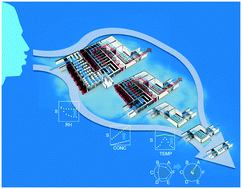Toward breath analysis on a chip for disease diagnosis using semiconductor-based chemiresistors: recent progress and future perspectives
Abstract
Semiconductor gas sensors using metal oxides, carbon nanotubes, graphene-based materials, and metal chalcogenides have been reviewed from the viewpoint of the sensitive, selective, and reliable detection of exhaled biomarker gases, and perspectives/strategies to realize breath analysis on a chip for disease diagnosis are discussed based on the concurrent design of high-performance sensing materials and miniaturized pretreatment components. Carbon-based sensing materials that show relatively high responses to NO and NH3 at low or mildly raised temperatures can be applied to the diagnosis of asthma and renal disease. Halitosis can be diagnosed by employing sensing or additive materials such as CuO and Mo that have high chemical affinities for H2S, while catalyst-loaded metal oxide nanostructure sensors or their arrays have been used to diagnose diabetes via the selective detection of acetone or by pattern recognition of sensor signals. For the ultimate miniaturization of a breath-analysis system into a tiny chip, preconditioning that includes preconcentration, dehumidification, and flow sensing needs to be either improved through the design of gas/moisture adsorbents or removed/simplified through the design of highly sensitive sensing materials that are less impervious to interference from humidity and temperature. Moreover, an abundant sensing library needs to be provided for the diagnosis of diseases (e.g. lung cancer) that are associated with multiple biomarker gases and for finding new methods to diagnose other diseases. For this aim, p-type oxide semiconductors with high catalytic activities, as well as combinatorial approaches, can be considered for the development of sensing materials that detect less-reactive large molecules, and high-throughput screening, respectively. Selectivity for a specific biomarker gas will simplify the system further. Breath analysis on a tiny chip using semiconductor chemiresistors with ultralow power consumption that is connected to the ‘Internet of Things’ will pave new roads for disease diagnosis and patient monitoring.

- This article is part of the themed collection: Lab on a Chip Recent Review Articles


 Please wait while we load your content...
Please wait while we load your content...